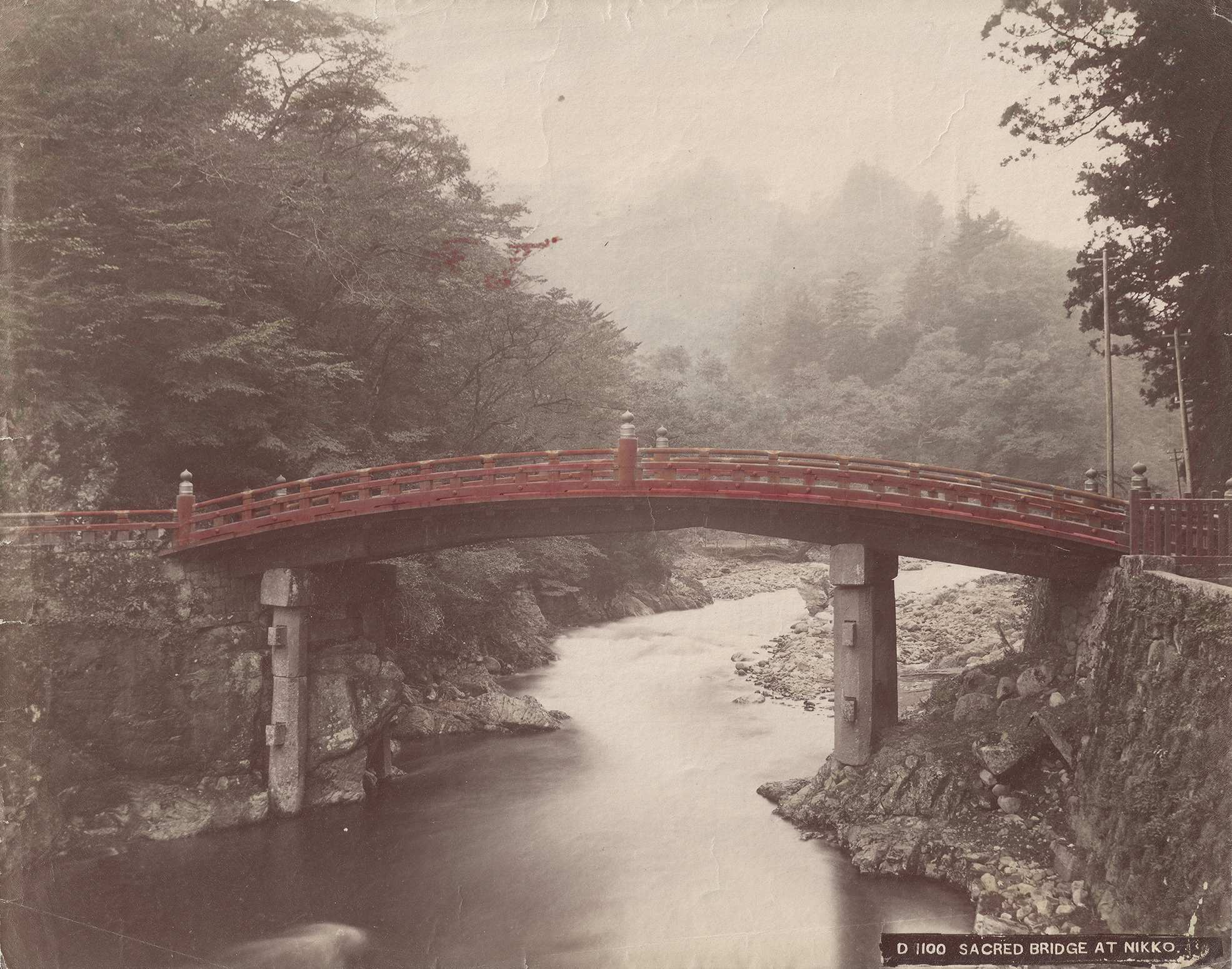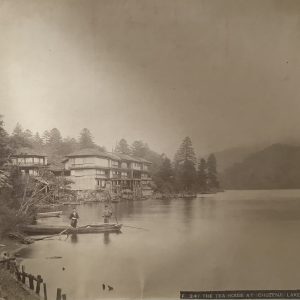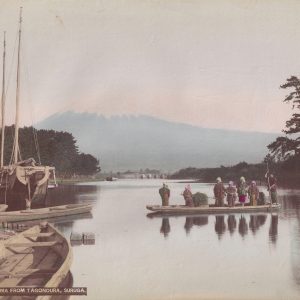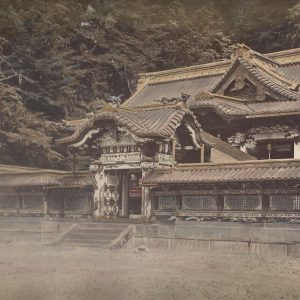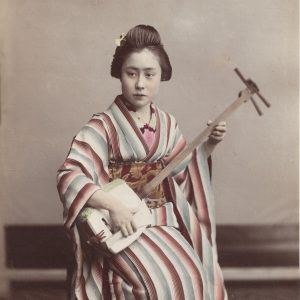Sacred Bridge at Nikko
120,00€
Hand coloured albumen print
(Not attributed)
Circa 1880
D. 21,6 × 27,4 cm
Description
This photograph, printed on albumen paper and then hand-coloured, is part of the refined production of the Yokohama school, which was a resounding success with Western clients. It depicts the sacred Shinkyō Bridge at Nikkō, where Buddhist and Shinto deities are worshipped.
Initially a sacred place of Buddhism and Shinto, the site of Nikkō, on which numerous temples are built, has become a popular holiday resort since the Meiji era. The sacred Shinkyō Bridge crosses the Daiya River and provides access to the shrines and temples of Nikkō. This bright vermilion lacquered bridge thus serves as a transition between the secular and sacred worlds. During the Edo period (1603 – 1868), only the shogun was allowed to use it. Since the Meiji era, tourism has developed there, and the site has been a UNESCO World Heritage Site since 1999.
Photographers take views of the site to produce souvenir photos for Westerners, who go there for pleasure. These photographs quickly found their way into Western collections, as they were produced for European and American clients.
Although the use of colour, which is so typical of Japanese photography, was initially intended as a documentary tool, it is now widely used for its aesthetic qualities and contributes to the originality of Japanese production. Hand-coloured, these photographs bear witness to a specific know-how, and the translucent colours are obtained from pigments mixed with bone glue (nikawa). This technique is particularly suited to the paper used for the print, whose main component is albumen. This warm-toned paper is particularly suited to the colouring technique, whose translucent aspect reinforces the naturalism of the representation.
Condition report: Fairly good condition, rim marked with several small tears and an old fold in the lower left corner.

